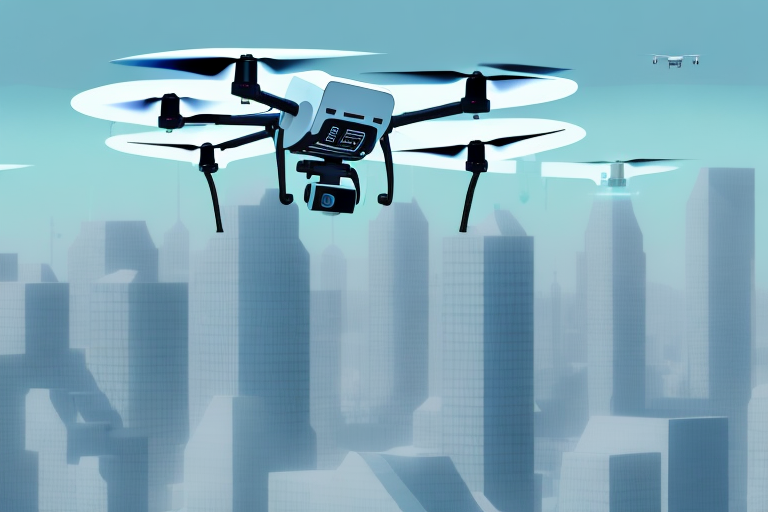In today’s technologically advanced world, the use of surveillance drones has become increasingly prevalent. These unmanned aerial vehicles have revolutionized various aspects of our society, from law enforcement and security to agriculture and wildlife conservation. In this article, we will delve into the multifaceted role of surveillance drones, explore their evolution, discuss their benefits and drawbacks, and examine their impact on privacy rights and civil liberties.
Understanding the Role of Surveillance Drones in Modern Society
Surveillance drones, also known as unmanned aerial systems (UAS), play a crucial role in gathering visual and audio information from the sky. Equipped with high-resolution cameras, thermal sensors, and even advanced artificial intelligence capabilities, these drones have the ability to capture real-time data in both urban and remote areas. They offer a bird’s-eye view that was once only achievable through expensive manned aircraft or satellite imagery. The collected information can be used for a wide range of purposes, including surveillance, monitoring, and intelligence gathering.
One of the primary applications of surveillance drones is in law enforcement and security operations. Police departments and security agencies utilize drones to enhance their situational awareness, investigate remote locations, and monitor public gatherings or critical infrastructure. Additionally, these drones are increasingly used in disaster management to assess and respond to emergencies, such as natural disasters or industrial accidents. By providing real-time aerial footage, surveillance drones aid in efficiently allocating resources and saving lives.
Another significant area where surveillance drones are making a significant impact is in the field of agriculture, wildlife conservation, and environmental monitoring. These drones are equipped with specialized sensors that can detect plant stress, monitor crop health, and identify areas requiring remedial action. Furthermore, they are instrumental in tracking and protecting endangered species, monitoring their habitats, and combating illegal poaching and deforestation. By providing invaluable data and insights, surveillance drones contribute to the sustainable management of our natural resources.
Surveillance drones are also being utilized in the field of infrastructure inspection and maintenance. These drones can access hard-to-reach areas such as bridges, power lines, and tall buildings, allowing for efficient and cost-effective inspections. By capturing high-resolution images and videos, drones enable engineers and maintenance crews to identify potential issues, such as structural damage or equipment malfunction, without the need for manual inspections. This not only saves time and resources but also enhances the safety of workers who would otherwise have to perform risky tasks at great heights.
Furthermore, surveillance drones are playing a crucial role in the field of journalism and media production. News organizations and filmmakers are increasingly using drones to capture aerial footage for news reports, documentaries, and movies. These drones provide a unique perspective and allow for stunning visuals that were previously only possible with expensive helicopter rentals. The versatility and maneuverability of drones enable journalists and filmmakers to capture dynamic shots and tell compelling stories from a different angle, enhancing the overall quality and impact of their work.
The Evolution of Surveillance Drones: From Military to Civilian Use
The inception of surveillance drones can largely be attributed to their military origins. Initially developed for military applications, drones were primarily used for surveillance, reconnaissance, and target acquisition. However, advancements in technology and decreasing costs have led to their widespread adoption by civilian entities as well.
Today, surveillance drones are not only employed by governmental agencies but also by private individuals, businesses, and non-profit organizations. They have become accessible and affordable, making their capabilities available to a diverse range of users. Whether it be monitoring construction sites, inspecting infrastructure, or capturing stunning aerial photography, drones have democratized aerial surveillance and transformed various industries.
Despite their use in civilian applications, it is crucial to acknowledge the inherent risks associated with surveillance drones. Issues such as safety, privacy, and regulatory frameworks have come to the forefront due to their widespread deployment. As we explore the benefits and drawbacks of drone surveillance, it is important to strike a balance between harnessing their potential and addressing these concerns.
One of the key advantages of surveillance drones is their ability to gather data and provide real-time information in a cost-effective manner. Traditional methods of surveillance often require significant resources and manpower, whereas drones can cover large areas quickly and efficiently. This has proven particularly beneficial in disaster response and emergency situations, where drones can assess damage, locate survivors, and aid in the coordination of relief efforts.
Furthermore, the evolution of surveillance drones has also led to advancements in their capabilities and functionalities. For instance, drones equipped with thermal imaging cameras can detect heat signatures, allowing for enhanced search and rescue operations. Additionally, the integration of artificial intelligence and machine learning algorithms has enabled drones to autonomously analyze data and identify patterns, further enhancing their surveillance capabilities.









